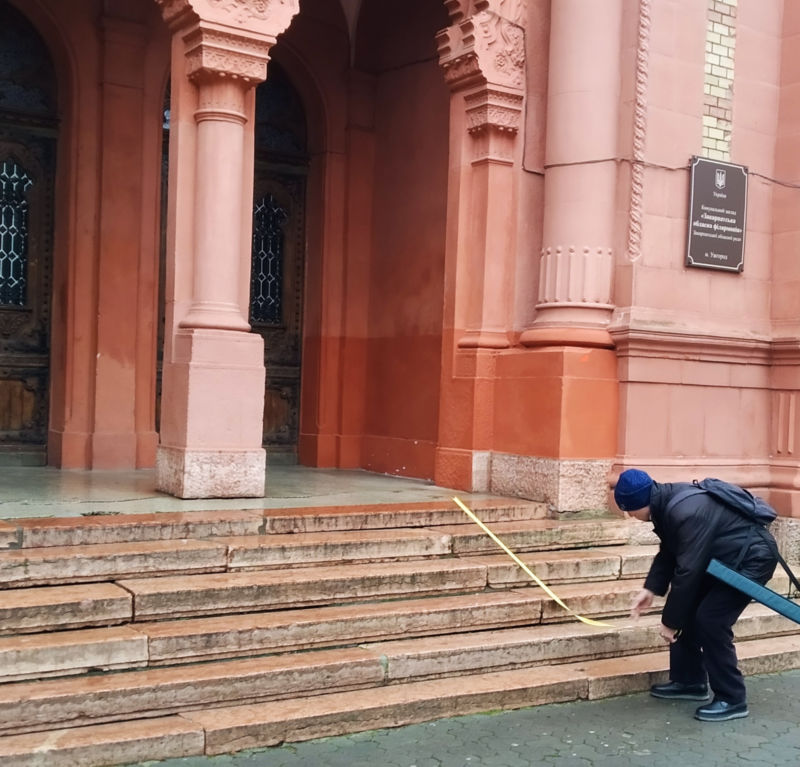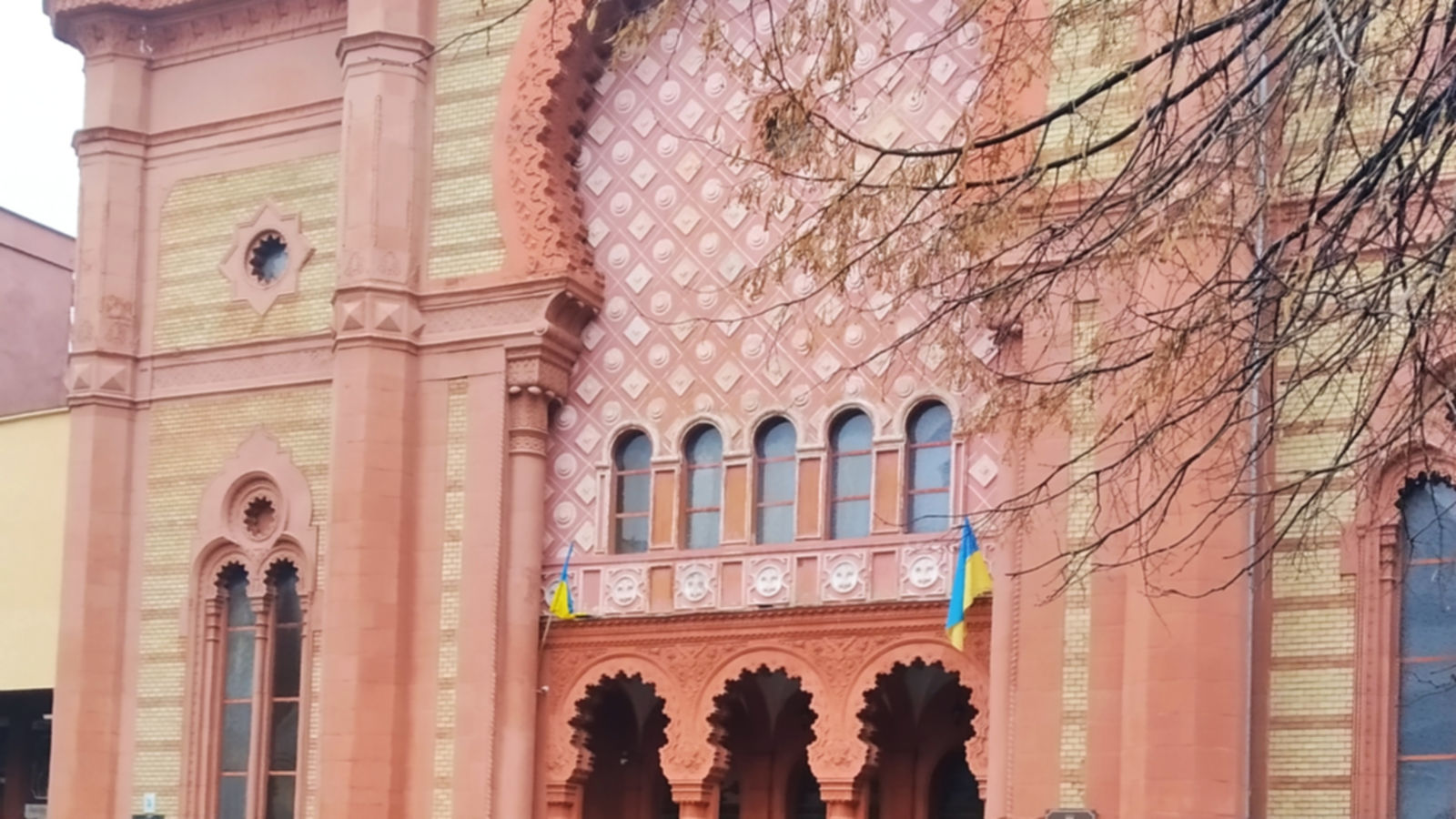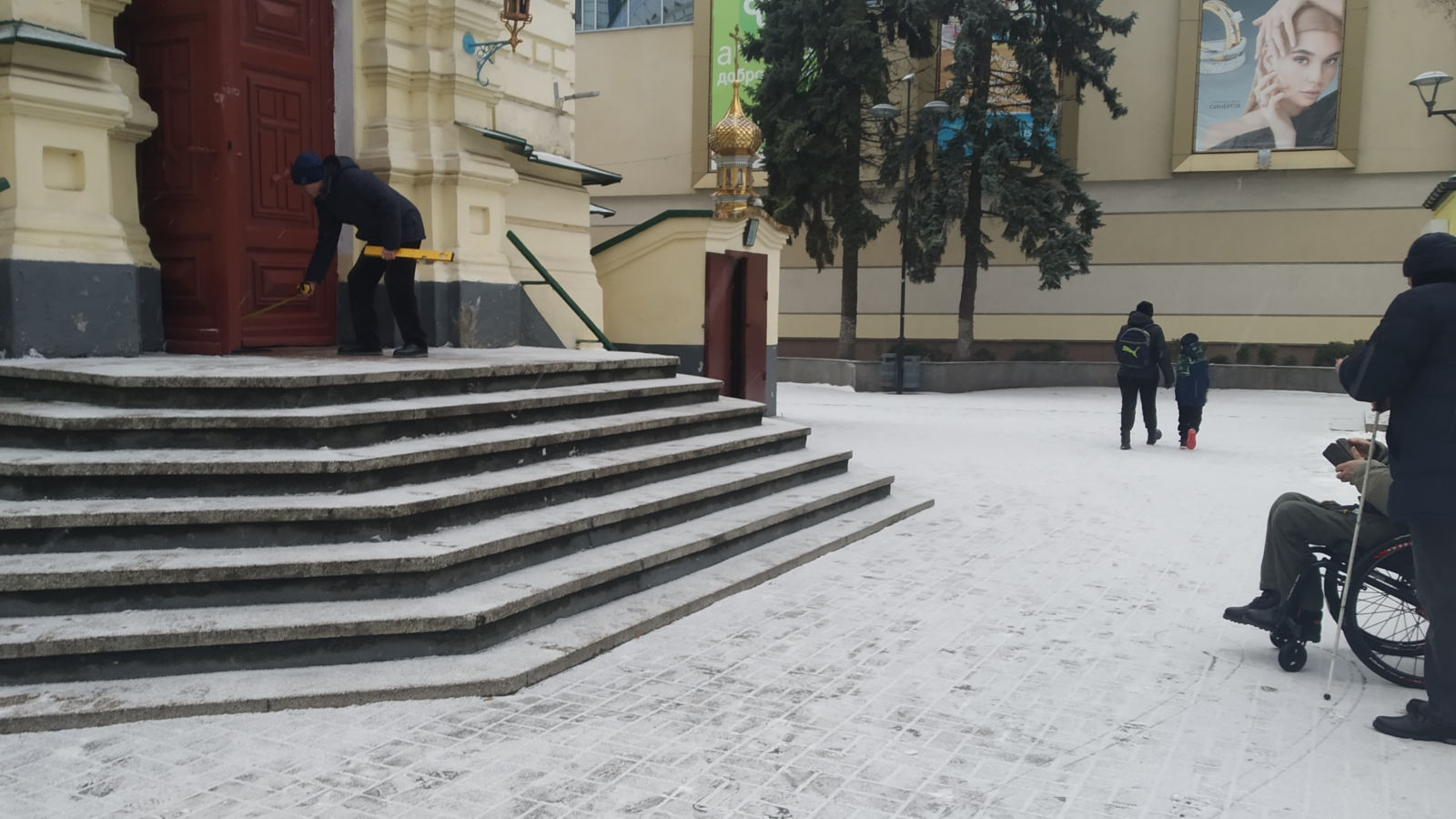The cultural and historical object is not accessible to people in wheelchairs. Only with the help of "carriers", the so-called "volunteers".
The concert hall is located on the second floor, accessible only by stairs. Without a toilet accessible to Persons with Reduced Mobility (PRM). The facility is accessible only to persons with visual impairments and without mobility problems.
Description

The Transcarpathian Regional Philharmonic was built in the Moorish style, but this building was built for entirely different functions. This is one of the most beautiful buildings in Uzhhorod - the Choral Synagogue of the Orthodox community of Ashkenazi Jews.
Archeologist, ethnographer, and folklorist from Mukachevo Tyvodar Legotsky (1830-1915) cite data confirming that Jews lived in the vicinity of Uzhhorod (Ungvar) already in the 13th century when Lviv was founded. The first official mention of Jews in Uzhhorod dates back to 1575. At that time, the community began to develop relatively quickly, and at the end of the 1720s, about 30 Jewish families already lived in the city. A document written in Hebrew, found by historian Mor Horowitz, indicates that a small Jewish community was established in Uzhhorod in 1724. And in 1730, the Jews invited Rabbi Leybush Bodek-Raizman from Lviv, who became the first leader of the community.
In 1904, the community of Orthodox Ashkenazi Jews had already built a substantial new prayer house in the city. For this purpose, the city administration gave the community a "valuable coastal area" on New Square. Before the beginning of construction, the Jewish community at its own expense, continued fortifying the banks of the Uzha River with a stone wall along the place where the future synagogue was to be located.
The project of synagogue was developed by architects Dyula Papp and Ferenc Sabolch. The names of those who carried out decoration work have also been preserved: they worked with ceramics, stained glass, etc. The external walls of the building were decorated with yellow and red clinker bricks, and this, combined with the rich architecture and picturesque location of the synagogue, made it one of the defining architectural monuments of the city. The most striking element of the facade of the building was the central balcony with the image of the Star of David inscribed in a large circle. One of the inscriptions on the building said: "Built-in 5694 according to the Jewish calendar." The symbolic Tablets of the Testament crowned the edifice.
The estimate of the works amounted to 200,000 kroner: the installation of central heating, electric lighting, water supply, and sewage was foreseen. The construction itself was carried out with the money of wealthy Jewish patrons and the entire community's funds. According to the project, the capacity of the synagogue is 900 people.
The official opening took place on July 27, 1904, when from the prayer house on the street Voloshyn (the building of the former "Uzhhorod" cinema), the sacred books of the Torah were transferred to the newly built synagogue.
During the Second World War, it was here, in the Orthodox synagogue, that Uzhhorod Jews were gathered to be sent to the ghetto and later to the concentration camps... The German and Hungarian troops used the synagogue in the last years of the war as a stable: the premises were deplorable - the building had a large crack, groundwater washed away the foundation, and walls collapsed. With the destruction of Transcarpathian Jewry in 1944, the fate of the synagogue changed, as the Jewish community in Uzhhorod practically disappeared.
After the war, the synagogue lost its original purpose. Uzhgorod Jewry was destroyed. The synagogue was closed, and during the occupation, it was turned into a warehouse.
Later, the Soviet authorities handed it over to the Philharmonic. The interior of the synagogue was completely rebuilt for the concert hall, in particular, a ceiling was made at the level of the women's balcony, and the synagogue became a two-story building. There is a lobby on the first floor, a hall for 830 seats, and a stage on the second.
The building's unique acoustics were destroyed, and all elements of Jewish decor were removed from the building.
Transcarpathian Regional Philharmonic was established in 1946. At various times, famous musicians and ensembles performed on the stage of the Philharmonic, including pianists: E. Gilels, V. Yeresko, S. Richter, V. Sechkin, M. Suk, violinists: A. Vynokurov, B. Kotorovich, O. Krysa, D. Oistrakh, L. Shutko, violist Yu. Bashmet, cellists: M. Rostropovich, M. Chaikovska, vocalists: O. Basistyuk, D. Hnatyuk, N. Matvienko, D. Petrynenko, A. Solovyanenko, Michigan Choir Chapel university, etc.
Later, an organ with three keyboards, one of the best in Ukraine with three keyboards and 2250 pipes, was installed in the Philharmonic. They brought an old organ from the Baltic States that had previously been repaired in Prague.
Address, contacts
sq. Teatralna, 10 m. Uzhgorod
https://philarmonia.uz.ua/


